
Some Propaganda:
Python instead of Matlab for plotting?
Helge Avlesen
A few years ago I «fell in love» with
Python
, which is a dynamically typed interactive, object oriented scripting
language. With a few extensions I found it very suitable for
efficient visualization and problem solving in Scientific computing.
So can it replace Matlab? For me its pretty close! For you? It depends on your
needs, but have a look!
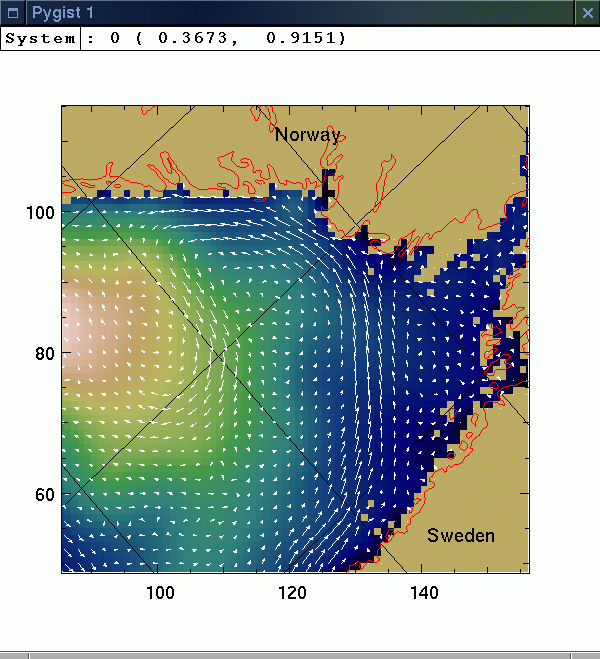
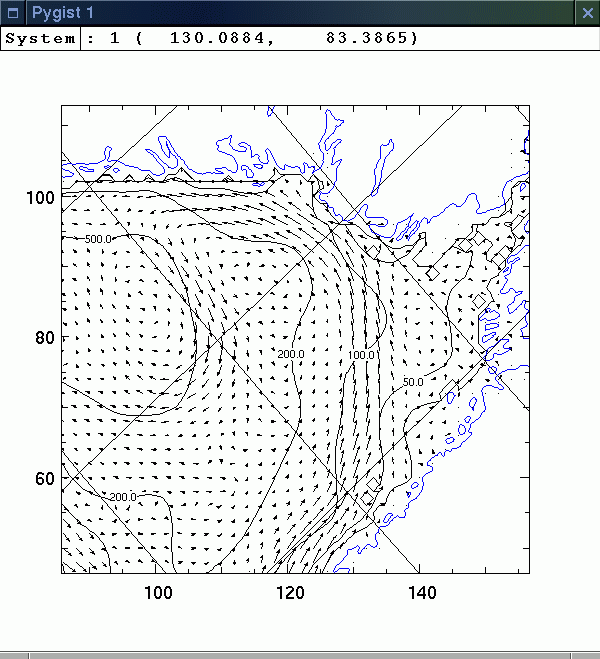
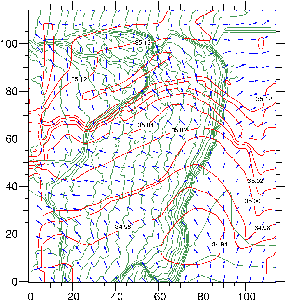
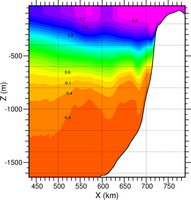
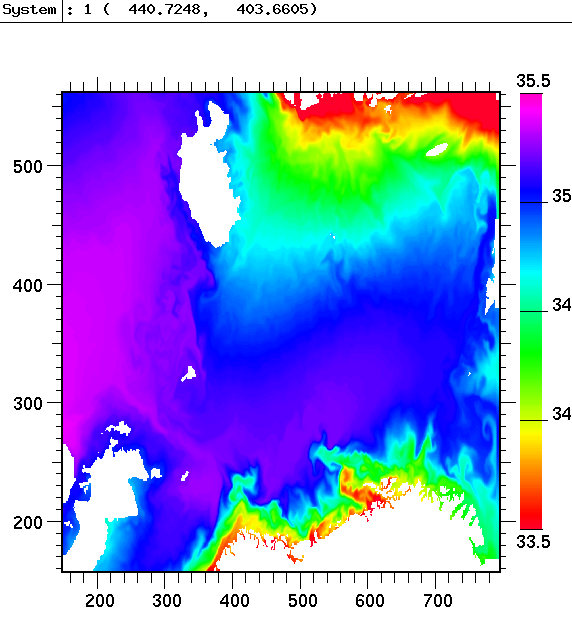
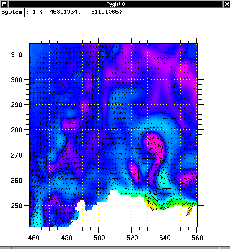
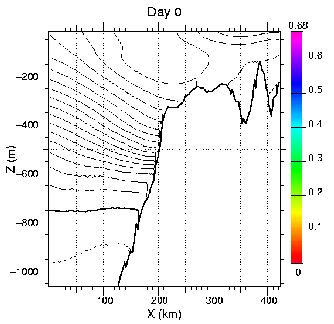
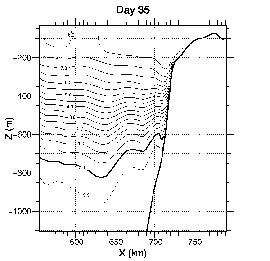
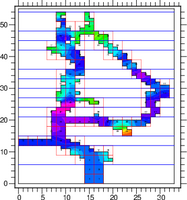
Python and Gist in action! Click on images to enlarge. Third last is a
color GIF animation, the second last is an EPS after running
postscript through eps2eps, the last image an PDF produced using
distill on an eps2eps file. Look further down on the page for details.
Why I use Python
- Python is a small, high level scripting language that sits on top
of a efficient C library. Because of this, Python code is compact,
and the resulting code can run at a speed close to C if the
computationally intensive parts are done via library calls.
- Short learning curve - I was almost
instantly
productive.
- Python can be used interactively (like matlab), and documentation
for most functions can be accessed via a built in help facility.
- It is free (also in
this regard)
- The syntax invites you to write clean code. No ;'s at the end of
lines, the block structure is described by indentation instead of
Begin-End or {..}. Through the Numeric/numarray modules one gets
powerful array syntax - inspired by languages such as Fortran 90,
Matlab, Octave, Yorick etc. Python itself has also borrowed features
from e.g. Lisp, with its interactivity and built in support for list
manipulation.
- Python has many other useful modules built in, one may for
instance write a web server in just a few lines of code or work
transparently with gzipped files (handy for analyzing large ascii
data files)
- Linking in and reusing Fortran subroutines is very easy using
e.g. f2py mentioned below, or the Pyfort module found on
www.python.org. Integration with C is of course even tighter since
the most popular python is written in C. (yes. there is a java python...)
- It is possible to work in single precision, which is sufficient
for most scientific purposes. This makes it easier to work with
large datasets/arrays using only half the memory compared to
e.g. matlab.
Python 2.7
The world moves on, Numeric and pygist have been abandoned by most due
to the arrival of the great Matplotlib package. I still like gist a
lot, so I try hard to keep it around. Here are instructions for how to
build the code with a recent Python on Windows 7. It seems to work
well, except from crashing when calling gist.winkill on Windows 7 (XP
is fine...)
First of all install a 32-bit python 2.7.x or similar from python.org
The precompiled package with pygist and Numeric: num24.2pygist1.5.28.zip
To use it, unpack e.g. in "C:\"
Set the following environment variables: (go to Control panel,
System and security, System, Advanced system settings, Environment
variables, User variables)
name value
PYTHONPATH C:\num24.2pygist1.5.28\Lib\site-packages\Numeric;C:\num24.2pygist1.5.28\Lib\site-packages\gist
GISTPATH C:\num24.2pygist1.5.28\g
If you are lucky, Pygist now works... The above zip also worked on 32bit Windows XP.
If you want to build your own library, follow the steps on a separate page
Making animations (or... getting sharp images out of pygist)
I converted each EPS to GIF using Ghostscript and Imagemagcick, something
like calling this function for each screen from gist I wanted to dump:
import commands
def image(name, type='gif', resolution=300, size=600):
gist.eps('dumpgif_tmpeps')
command='convert -density '+`resolution`+'x'+`resolution`+\
' dumpgif_tmpeps.epsi -resize '+`size`+'x'+`size`+' '+name+'.'+type
status,output = commands.getstatusoutput(command)
and then finally "gifsicle" was used to combine the GIF's into an animation.
Using convert implies antialiasing or ugly aliasing in the image
files. X seems to render much more cleanly, and we can utilize this
via a screen captures. My favorite for doing this is another tool
from Imagemagcick called "import", which can capture a region of my
screen to a file of the desired format. On my 1280x1024 monitor I open
a 100dpi gist window
...
gist.pldefault(dpi=100)
and place it in the upper right corner. The razor sharp plotting area
can then be captured and saved in a GIF file by a simple call to the
function defined as
def capture(name, type='gif', geometry='600x600+680+50'):
command='import -window root -crop '+geometry+' '+name+'.'+type
print 'Running: ',command
status,output = commands.getstatusoutput(command)
You will most likely need to adjust the geometry parameter.
Automating Gist even more
Pygist can produce images even when you don't have an X server on your
client machine, the only gist function to avoid is "gist.fma()". Here
we use the above image function to dump gif's without opening an X
window.
gist.window(display="", hcp="dummy.ps")
...
image("testimage", resolution=150)
...
gist.winkill(0)
As my basic setup I use Python with the following extensions:
Numpy:
a.k.a. Numeric python, contain the advanced array syntax, as well as
powerful and commonly used functions that can be applied to the multi
dimensional arrays.
Pygist: Gist is a very fast graphics library for 2D and 3D
plots written directly for X11, but also ported to Mac and Windows.
Gist is a part of the
Yorick
language (PS dead link but provided for reference). Pygist contain the Python bindings, read about it
here.
A recent version of Pygist can (by Sep 2012 make that "could"...) be found
here.
Pygist is currently also a part of a distribution of Python packages called Scipy, that
can be found
here.
f2py:
Makes connecting Fortran subroutines a breeze! Also a part of Scipy.
A complete example: wrap this subroutine in a Python function
returning "dist":
[avle@tindved test]$ cat r1.f90
subroutine r1(x,y,n,dist)
real x(n),y(n)
!f2py intent(out) dist
xl=0.0 ; yl=0.0 ; vp=0.0
do i=1,n
xl=xl + x(i)**2 ; yl=yl + y(i)**2
vp=vp + x(i)*y(i)
end do
if(vp>=0.0)then
dist = acos(sqrt(vp/(xl*yl)))
else
dist = 4*atan(1.0)-acos(sqrt(-vp/(xl*yl)))
end if
end subroutine r1
[avle@tindved test]$ ls
r1.f90
[avle@tindved test]$ f2py -c -m r1 --fcompiler=g95 r1.f90
..lots of output...
[avle@tindved test]$ ls
r1.f90 r1.so*
[avle@tindved test]$ python2
Python 2.2.3 (#1, Feb 15 2005, 02:41:06)
[GCC 3.2.3 20030502 (Red Hat Linux 3.2.3-49)] on linux2
Type "help", "copyright", "credits" or "license" for more information.
>>> import Numeric as nx, r1
>>> a=nx.array((2.3,2.2)) ; b=nx.array((3.2,2.1))
>>> r1.r1(a,b)
1.2827057838439941
>>>
Update 2012: f2py has been included in numpy for a long
time. If you download and install the 32 bit Windows installer, there
will be a script called f2py.py, for me located in
"\Python27\Scripts", that can be executed directly in DOS. With MinGW gfortran use the command
f2py.py -c -m r1 --fcompiler=gfortran r1.f90
to build the example above.
Some unix functionality on the python prompt ala matlab:
(the wrap() function is stolen from some script I found on the net some
time), to make the commands available:
download unix.py and put it into your
$PYTHONPATH, insert this line into ~/.pythonrc or execute manually:
from unix import *
on the python prompt you now have the following commands available
ls runs "/bin/ls -F -s"
lsd(dirname) runs "ls "
ll runs ls -ltr
cd(dirname) same as "cd dirname"
cat(filename) same as "cat filename"
less(filename) same as "less filename"
emacs(filename]) invoke "emacs -nw filename"
eog(imagefilename)
acroread(pdffilename)
gv(postscriptfile)
pwd same as pwd
rm(filename)
rmdir(dirname)
Other interesting tools/resources:
www.python.org
has its own page for
Scientific computing
,with links to lots of resources, e.g. plotting with Pgplot and Python.
Matplotlib. This
is a rapidly developing package for plotting with python, and already
is on par with Gist featurewise. It is maybe The package to watch for
publication quality plotting in python, but still suffer from a few
rough corners. Its quiver and pcolor routines are e.g. extremely slow
for anything except toy datasets.
Scipy: an attempt to integrate
several well known packages, e.g. Numeric python, spline algorithms
from netlib, Lapack pieces, Gist, fft and more.
ScientificPython:
utility stuff, e.g. netCDF support.
Paul Dubois has written a
summary
of some of LLNL's Python activities in climate modeling.









